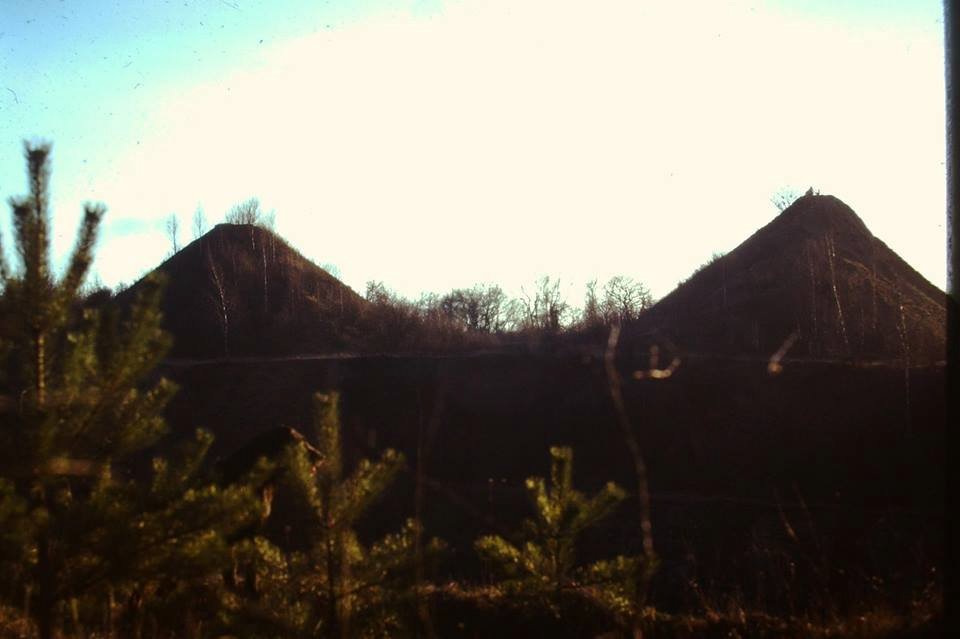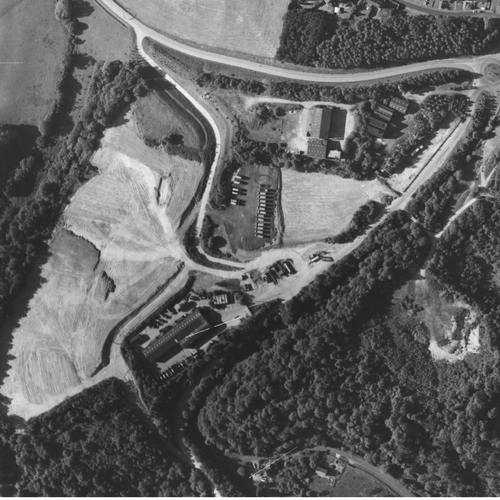ISLES QUARRY : Borough Green Quarries and Pits
Borough Green is literally infested with quarries. Stangate Quarry, Kinghill Quarry, Borough Green Quarry, Stanley's Quarry, and Isles Quarry were all ragstone, but now landfilled. Isles and Stangate grew and developed Tarmac, concrete and filler plants, and associated engineering companies like Fluostatic, Arcontrol and ARC Engineering.
From 1921 tipping skips were shunted about by small "locos" running on a narrow gauge railway until 1956 when they were replaced by dumptrucks. These locos were often driven by young lads, who weren't strong enough to work on the stone. In those days ragstone was predominantly broken and loaded by hand, and as far as we know, the last surviving sledge man in Isles Quarry was Big Jim Allingham. When I worked for ARC, Peter Bance, an older quarryman, who used to be a "loco-boy", used to regale me with tales of the Chittenden and Simmons days..and the Sentinel Steam Wagons
The picture below is a 1920's shot looking north at the southern spoil tip of Borough Green Quarry, later named Isles Quarry East. This is virtually where quarrying began in BG. The road in the foreground is Basted Lane, leading to Basted Paper Mill. People today think this is pristine natural woodland : little do they know what is under their feet !!
Only 40% of the material extracted in Borough Green was a hard limestone, and the balance a soft limestone called hassock, so quarrying generated almost more waste than the stone they dug up in the first place, which is why there are so many spoil heaps.
There were also sandpits, Ightham Sandpit supplying Sevenoaks White Brick, and later H+H Celcon. Hall's Sandpit, later operated (badly) as a landfill site by Cemex. Joco Pit operated for sand and then landfill by John Naylor. Borough Green Sandpit, curiously mostly in Platt, was operated by Dennis Smith, and then Roger Body. Platt Industrial Estate was built on the remains of a brickworks that closed when the clay ran out, but clay was excavated to the north by Rugby Cement for their Cuxton Works.
Below Basted Quarry 1920s, looking north, later called Isles Quarry East
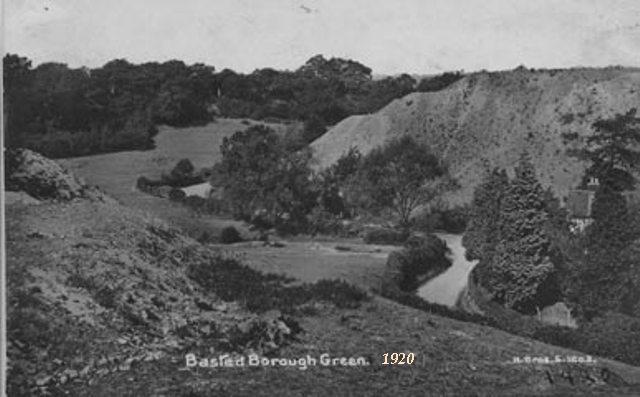
This first map from 1869 shows the geographical area of Isles Quarry on the left of Thong lane, and what would become Borough Green Quarry to the right
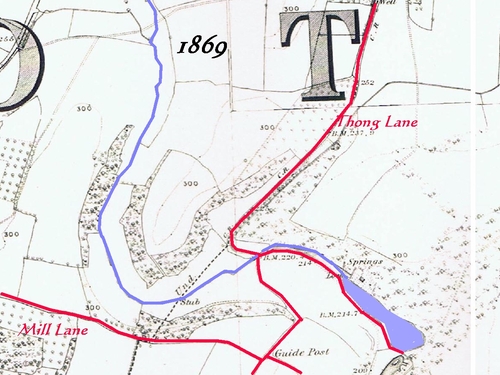
The 1895 map below shows the first two quarries, highlighted in green. Basted Quarry worked north towards Borough Green, and Stanley's was literally cut out of the side of Thong Lane. It is thought that Stanley's Quarry gave Stangate Hill its name, literally Stanley's Gate. Stanleys got absorbed as Isles Quarry East workings moved inexorably south
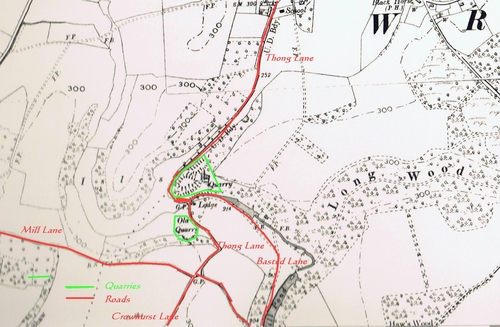
Progress was slow in these early days, neither quarry having moved much since 1895, as this 1907 map shows
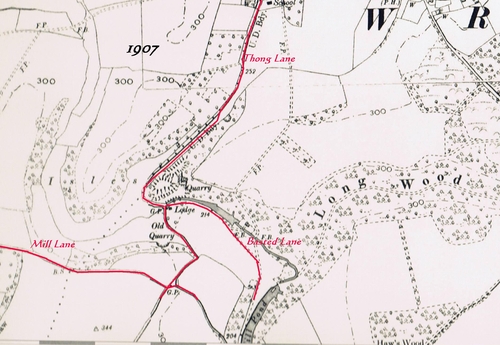
There is a sudden leap in excavation , no doubt triggered by the aftermath of World War One and the massive expansion of road haulage, BG ragstone being much in demand for tarmac. BG Quarry has reached its northernmost limit, and has crossed Thong Lane and doubled back southwards. There is now a tarmac plant on the left of Thong Lane, and the associated graders and dryers are on the other side of the lane, connected by bridges and conveyor belts. Stone was bought up from the quarry by "locos", small petrol engined locomotives pulling trains of tipping skips. You can just make out the tramway marked on the map to the left of Thong Lane.
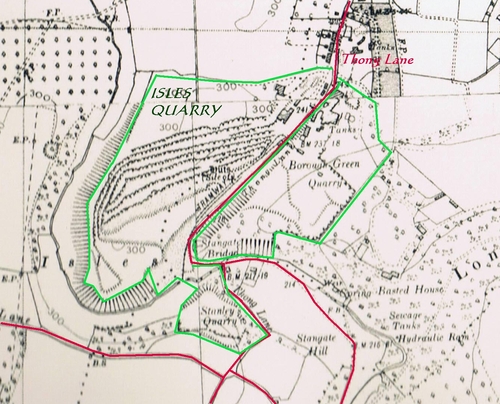
Between the wars British Quarrying company operated a large fleet of Sentinel Steamers, here shown at the Isles Quarry weighbridge.
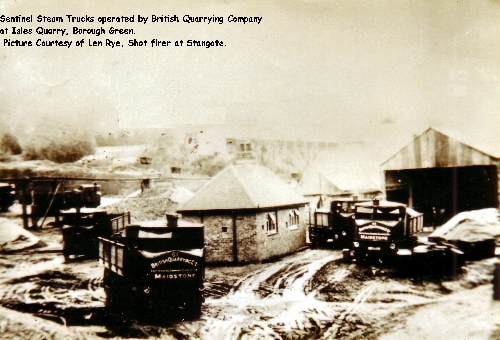
Below is a picture taken in the 1920s from the south looking at the Isles Quarry as shown in the 1938 map. In those days, whilst the stone was carted to the crusher by loco, it was still quarried and loaded by hand. Jim Allingham was the last known villager to have wielded a sledge hammer breaking rocks here. If you look carefully in the foreground you can see the tramway, with a siding off to the left where a loco-skip awaits loading.
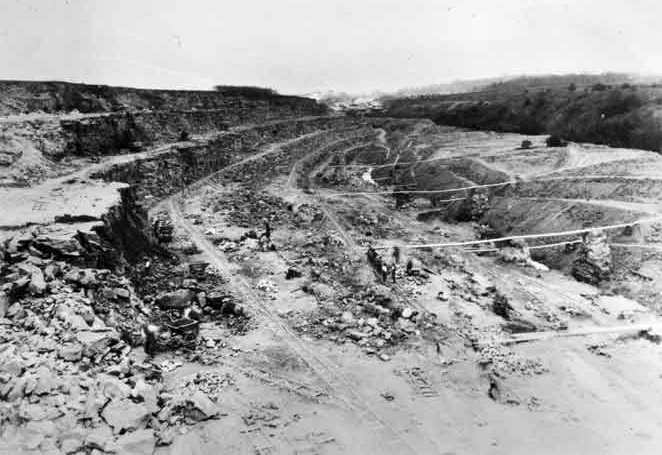
The kids below playing in one of the loco skips were photographed in the early 50s, and that's my Jackie in the middle, little horror!!
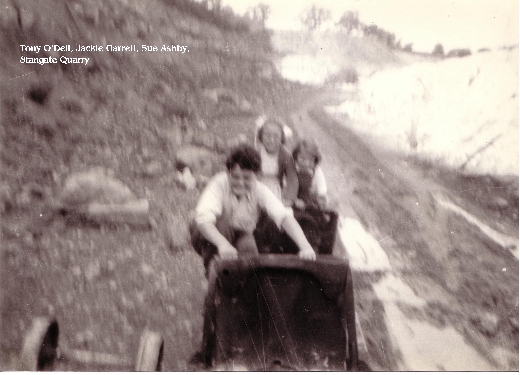
Below is a very grainy aerial shot of Isles Quarry taken sometime post-war, clearly showing the plant and workshops at Isles, and the two spoil heaps on the old Borough Green Quarry, known locally as Sabrina's T**s. The start of Stangate Quarry can just be seen on the right of Isles Quarry. Looking clockwise around the village you can clearly see Sevenoaks White Brick and Hall's sandpits, Joco is just visible above that, and in the top centre is Borough Green Sandpit, then still in Platt. This picture is taken looking North East. To the North and East of Isles Quarry are the open fields that became Valleyview and Woodlands housing estates during the 60's.
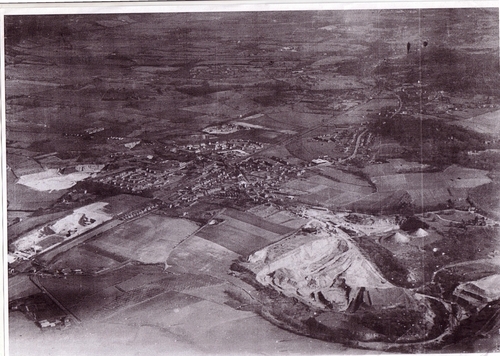
This picture was taken looking south from the village along Thong lane. The Isles Quarry Tarmac Plant and storage hoppers jutting into the sky, and an old Thames Trader 4-wheeler tipper labouring up what then was renamed Quarryhill Road. Just visible behind the trees to the left is one of Sabrina's ***s. British Quarrying Company was sold to ARC, the Goldfields followed by Amey, finally taken over by Hanson.
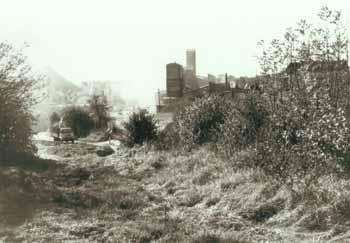
This is one of an excellent series of aerial shots taken in 2007 by resident Steve Hayman, that nicely shows the relationship between all the quarries and the village
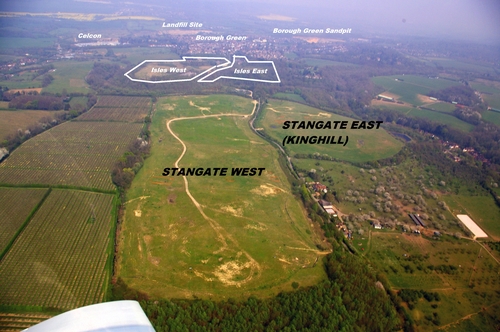
This is a stunning aerial photo taken in 1988 over Isles Quarry, showing all the Garbos parked up. Click on the picture to go to an enlargeable version, then click the mouse over the picture.
Picture taken from Sabrina's spoil heaps, showing Filler Plant, Isles Weighbridge, and behind them the Sentinel workshops
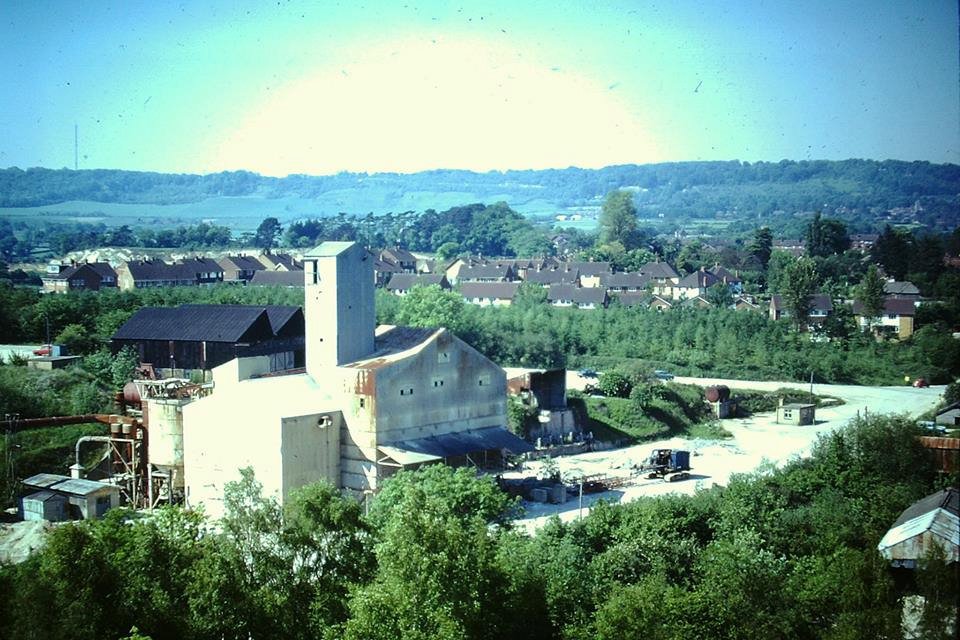
Again from Sabrins'a, the Arcontrol Offices and tipper park (now the Surgery), with the old stone grading/crusher buildings in the foreground. Notice the conveyor bridge over Thong Lane bottom left
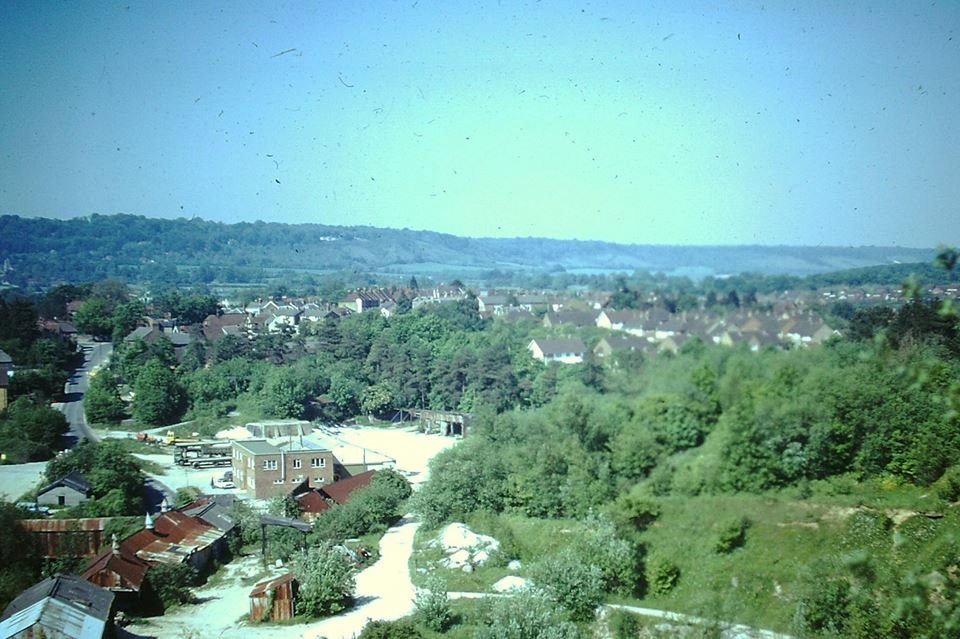
Spoil tips, known locallys as "Sabrina's". Sabrina was a famous model in the 50s and 60s.
